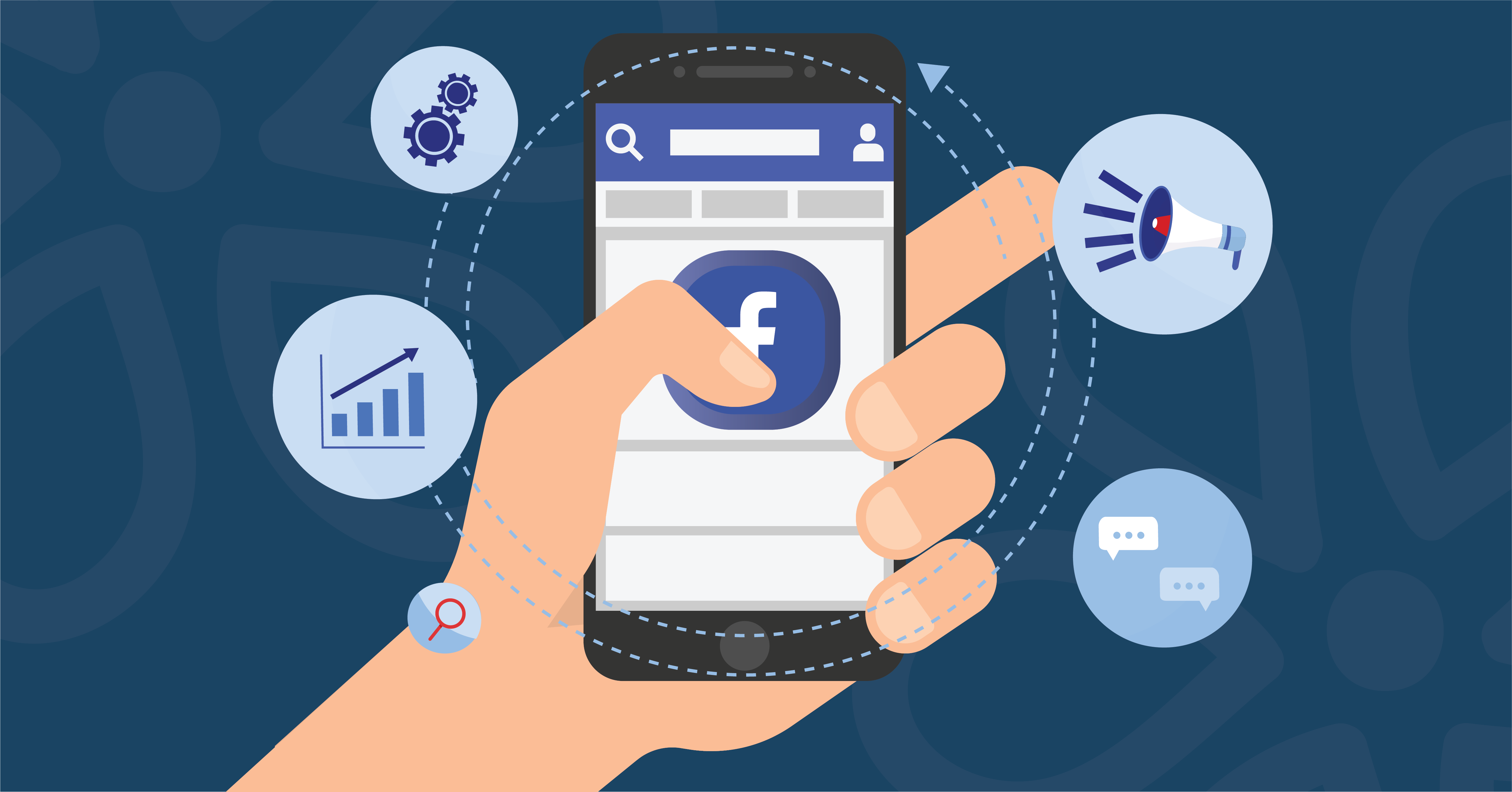Learn how to use Facebook’s powerful tools, from engaging content creation to integrating e-commerce, to build a dynamic brand presence online.
Worldwide, there are over 3 billion active monthly users on Facebook. Over 175 million of those users are in the United States. With metrics like this, it is obvious that Facebook is one of the most powerful social media platforms for brands looking to showcase products and build a loyal and engaged audience. However, building your brand on Facebook can be a real challenge. The platform is saturated with marketing content and has an algorithm that prioritizes showing users friends and family posts over business pages. Overcoming these challenges takes a savvy social media mindset and the right content strategy. This article shares seven tips to help marketers and entrepreneurs like you reach your audience on Facebook and drive conversions.
We hope you are ready to take some notes:
1. Craft a Brand Voice and Visual Identity
A strong brand identity on Facebook starts with crafting a cohesive brand voice and visual presence. Your brand’s tone of voice should reflect your company’s personality and values, making it instantly recognizable to your audience. Similarly, visual consistency in your profile photo, cover photo, and overall content timeline helps reinforce your brand identity. Everything from brand colors to emoji usage should reflect the brand message. The basic concept is that a user should understand your brand without having to dig. Make it easy for visitors to grasp the brand quickly.
Look for tools to help you create your content visuals. Programs like Canva are great additions to your toolbox. Canva, Design Wizard, and other web-based template editors simplify the design process with templates and easy-to-use features, allowing you to craft custom cover images, post content, and profile pictures that stand out. Template editing tools also allow you to build a brand kit where you can save elements like logos, fonts, colors, templates, and more that you can quickly pull into your designs.
2. Generating Engaging and Relevant Content
For any brand or small business, the heart of success lies in the Facebook content you share. Creating content that resonates with the interests of your target audience is key. This means crafting posts, videos, and other media that align with your marketing strategy and your audience’s demographics. Design content that speaks directly to your followers’ needs and desires.
Start by understanding your audience’s preferences—what do they like to watch, read, and interact with? Incorporating video content, for instance, can significantly increase engagement rates, given its popularity and shareability on social media platforms.
A consistent Facebook presence has a huge impact on content engagement. Regularly posting content helps you maintain visibility in your audience’s news feed. Meta Business Suite Makes it easy to plan and schedule content ahead of time, allowing you to batch the creation process and slowly release it onto your Facebook business page.
3. Leveraging Facebook Live and Messenger for Engagement
Explore all the tools you have access to with your Facebook account. Facebook Live broadcasts enable you to engage with your audience in real-time, whether you are showcasing a new product, conducting a live Q&A, or simply sharing behind-the-scenes glimpses of your business. Live interactions boost engagement and humanize your brand, putting a face to the business.
Messenger can also be a powerful tool for enhancing customer service and the overall Facebook experience. It allows for direct, one-on-one conversations with your followers, offering personalized assistance or answering queries in a timely manner.
Combining the reach of Facebook Live with the personalization of Messenger can significantly elevate your brand’s presence on Facebook. Consider announcing upcoming live sessions through Messenger or following up after a broadcast to gather feedback and answer additional questions.
4. Integrating E-commerce with Facebook Shops
Facebook shops serve as digital storefronts where businesses can curate a selection of products to showcase on their profiles. This feature allows potential customers to explore products, get detailed information, and even complete a purchase within a few clicks without ever leaving the platform. It’s an effective way to reduce the steps to purchase a customer needs to take, which can have a positive impact on conversion rates.
One of the powerful aspects of Facebook’s business tools is the ability to add action buttons to your page and posts. These buttons can direct your audience to take specific actions, such as purchasing or learning more about a product.
Tips for Maximizing Your Shop’s Potential
- Consistent Branding: Ensure your shop’s appearance is consistent with your brand identity, including logos, colors, and messaging.
- Engaging Descriptions: Write clear, compelling product descriptions that highlight the features and benefits of your products.
- High-Quality Images: Use high-quality, visually appealing images to showcase your products and make them more enticing to potential buyers.
You can create a dynamic and effective online selling environment directly within Facebook by leveraging shops and utilizing strategic action buttons.
5. Mastering Facebook Ads for Targeted Outreach
Creating effective Facebook ads involves more than just crafting compelling content; it requires a deep understanding of the native Facebook advertising tools and the ability to segment your audience with precision. A paid ads strategy allows you to create tailored campaigns to reach the individuals most likely to engage with your brand and convert into customers.
Facebook’s ad manager is a comprehensive tool for creating, managing, and analyzing advertising campaigns. With its user-friendly interface, you can set up ads tailored to your marketing objectives, such as increasing brand awareness, driving website traffic, or boosting sales.
- Campaign Setup: Begin by defining your campaign’s goal. Facebook offers several objectives that match your marketing strategy, such as lead generation, conversions, or brand awareness.
- Audience Segmentation: Refine your target audience by using demographic, geographic, and psychographic data. Facebook’s detailed targeting options let you reach specific groups based on interests, behaviors, age ranges, and more.
To maximize the impact of your ads, leverage Facebook’s advanced targeting tools. These include Custom Audiences, which allow you to target users based on their previous interactions with your brand, and Lookalike Audiences, which help you reach new users similar to your existing customers.
- Custom and Lookalike Audiences: By analyzing your existing customer data, Facebook can help you find and target users with similar interests and behaviors, increasing the relevance and effectiveness of your ads.
- Retargeting Campaigns: Implement retargeting strategies to re-engage users who have interacted with your brand but haven’t converted. This can include visiting your website or adding items to a shopping cart without completing a purchase.
Analyzing Performance with Metrics and Pixels
Analyzing performance metrics and using Meta Pixels is important for continually optimizing your campaigns. A Pixel is a code snippet placed on your website that tracks conversions from Facebook ads, helping you understand user behavior and refine your targeting strategies.
- Metrics Analysis: Regularly review your ad performance metrics within the ad manager to gauge the effectiveness of your campaigns. Key metrics include Click-Through Rate (CTR), Conversion Rate, and Cost Per Click (CPC).
- Utilizing Pixels: The Meta Pixel provides valuable insights into how users interact with your website after clicking your ad. This data is instrumental in optimizing your campaigns for better performance and ROI.
By mastering Facebook ads and utilizing the platform’s sophisticated advertising tools for precise audience targeting, you can significantly enhance the reach and effectiveness of your marketing efforts.
6. Boosting Authenticity with User-Generated Content and Testimonials
Authenticity and trust are currency for brands on social media platforms. User-generated content (UGC) and testimonials help to create an authentic brand identity, showcasing real-life customer experiences and satisfaction.
Testimonials and reviews from satisfied customers are powerful endorsements, influencing potential buyers by highlighting positive experiences. Showcasing these testimonials through regular Facebook posts or within your Facebook page’s bio can significantly impact your audience’s perception of your brand. Engaging with positive comments and feedback takes this to another level, turning casual browsers into loyal customers.
Leveraging Facebook’s Features for UGC
Facebook offers a suite of features to help you collect and display UGC and testimonials. Encouraging customers to leave reviews on your Facebook business page provides immediate social proof to page visitors. Sharing user-generated content through Facebook Stories or Live sessions encourages more users to share their experiences, and conducting polls and surveys not only engages your community but also supplies content that can be transformed into testimonials.
By focusing on user-generated content and testimonials, your brand can cultivate a sense of authenticity and trustworthiness on Facebook. This strategy strengthens your relationship with existing customers and attracts new ones, showcasing the real-world appeal and effectiveness of your products or services.
7. Expanding Reach Through Influencer and Brand Collaborations
Collaborating with influencers and partnering with other brands is a wildly popular strategy for expanding a brand’s visibility and reach on social media, and for good reason. These collaborations, particularly on social networks like Facebook, LinkedIn, WhatsApp, and TikTok, offer unique opportunities for cross-platform marketing, allowing brands to tap into new audiences and enhance their market presence.
The Impact of Influencer Collaborations
By partnering with influencers whose brand values align with yours, you can introduce your products or services to a wider yet targeted audience. This strategy boosts your visibility and lends a layer of trust and authenticity to your brand, as endorsements from respected figures carry considerable weight.
Leveraging Brand Partnerships
Similarly, collaborations with other brands can open avenues for reaching new customer segments. These partnerships, especially when aligned in values and audience demographics, can lead to innovative cross-promotions, shared campaigns, or even co-created products. Such collaborations allow both brands to benefit from the combined strengths of each other’s social media presence, multiplying their reach and impact.
Elevate Your Facebook Marketing Strategy Today
Crafting a well-rounded Facebook marketing strategy is important for any business looking to make an impact online. From fine-tuning your Facebook profile with a clear brand voice and appealing visuals to harnessing the power of Facebook ads for targeted growth, every step you take strengthens your online presence.
As you refine your social media marketing tactics, remember the value of a structured approach. Utilizing step-by-step guides and templates can streamline your efforts, ensuring you’re reaching your audience and engaging them meaningfully.
We’re eager to hear about your journey with Facebook marketing. Have you discovered a strategy that works for your brand? Or maybe you’re seeking new ways to amplify your digital marketing efforts. First Media is here to dive deeper into the world of digital marketing with you. We are experts in leveraging social commerce on every social media platform. Learn more about what First Media can do for you. Let’s grow together.





